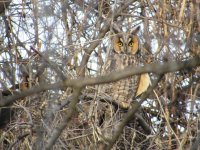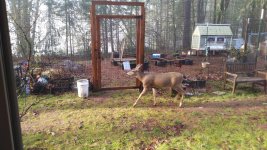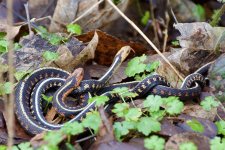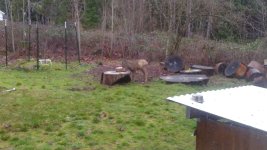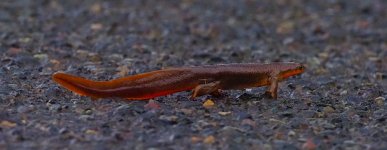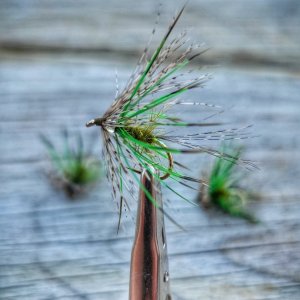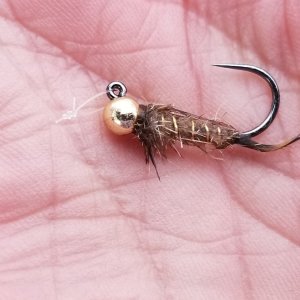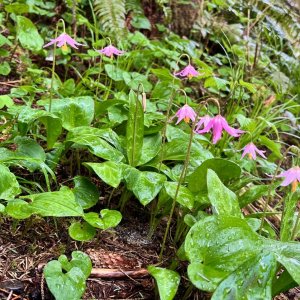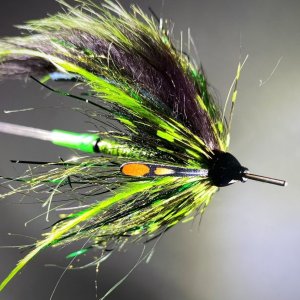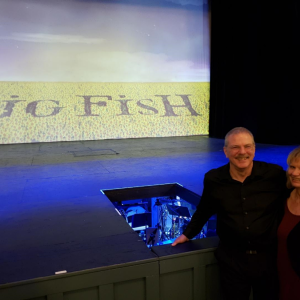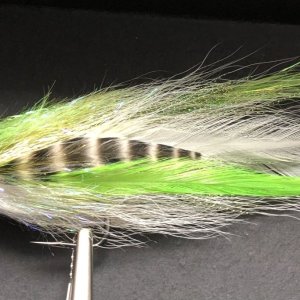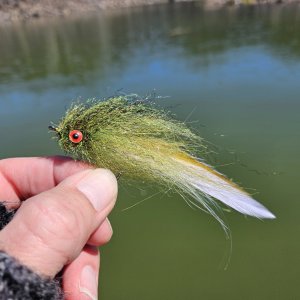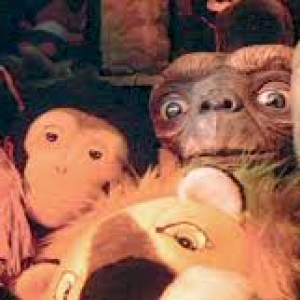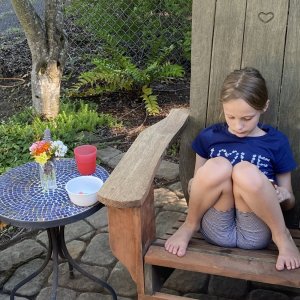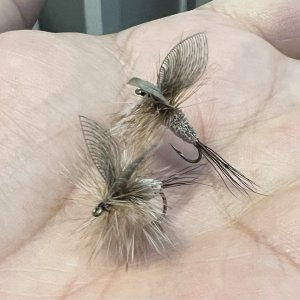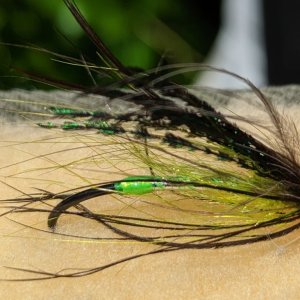You are using an out of date browser. It may not display this or other websites correctly.
You should upgrade or use an alternative browser.
You should upgrade or use an alternative browser.
Backyard Wildlife
- Thread starter Canuck from Kansas
- Start date
Rich - incredible!
Magnificent. There is just something soooo cool about owls. Wish I could get a shot of the fellow(s) I hear when I get up, but it's just too dark and I think they are too far off.
cheers
cheers
Just started a new book on crows and ravens. I knew that a group of crows is called a murder but didn't know a group of ravens was called an "unkindness".....
Very cool, any hints as to why?Just started a new book on crows and ravens. I knew that a group of crows is called a murder but didn't know a group of ravens was called an "unkindness".....
cheers
It has to do with the middle ages when they would feed on battlefield casualties. That would be both the crows and the ravens.
BTW - The book is: In the Company of Crows & Ravens, John H. Marzluff & Tony Angell.
Tony Angell is a local author. I read another one of his books - The House Of Owls
Tony Angell is a local author. I read another one of his books - The House Of Owls
Also an excellent stone sculptor.BTW - The book is: In the Company of Crows & Ravens, John H. Marzluff & Tony Angell.
Tony Angell is a local author. I read another one of his books - The House Of Owls
That is a STRIKING owl. Very nice.Long Eared Owls
View attachment 99702
Steve
We are closing rapidly on a foot of rain for January. Today it was an unseasonable 65 degrees. I'm thinking that all the flooding drove these two from their winter den, and with the warmth……”Hey baby, while we're up how about a little sssserpent ssssex?”. Today, 1/28.
Interesting color difference.
View attachment 101443
Those are really cool looking snakes. I've never seen one before. I'm going to have to look them up.
Gyrfalcon22
Life of the Party
Jim F.
Still a Genuine Montana Fossil
And you did well! As my Dad once told me,: "You have to pick the fruit where you find the tree." The only thing I could photograph around here of late has been fog . . .Since my walk-around lens does not have a variable zoom range and has a minimum focusing distance of 18 feet, this was the best I could do.
Last edited:
Gyrfalcon22
Life of the Party
I still have my treasured Tony Angell book of charcoal drawings of Birds of Prey of the Pacific Northwest I bought in downtown Olympia as a kid in about 1973. A few years ago he gave a talk at the Olympia library about a 3 minute walk from that long-shuttered bookstore. I missed the presentation.BTW - The book is: In the Company of Crows & Ravens, John H. Marzluff & Tony Angell.
Tony Angell is a local author. I read another one of his books - The House Of Owls
Poor guy, can't imagine how he'd feel of a 50 something year-old fan showing him the tattered book and me telling him it was well over 40 years ago. Am guessing it would be a mixed reaction. Haha.
Love his art which is now more stone sculpture than ink or charcoal.
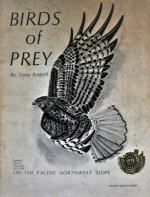
Last edited:
You are lucky. I have a couple of his book: Gifts of the Crow and House of Owls. They have some nice sketches.
Night before last and yesterday until about noon, it rained HARD down here in Redondo Beach/Torrance. Did I mention it rained HARD? This squirrel has recently learned that by staring into our daughter's living room, an apple core will get tossed onto the patio pavers. This particular fox squirrel looks an awful lot like a lot of the homeless people we see around the South Bay, but at least the squirrel drenched clean.
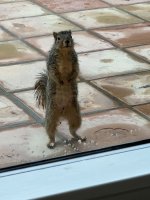

Last edited:
"Wildlife" sensu lato. Bird’s nest fungus, Nidula niveotomentosa. You never know what you might see when you are taking out vegetable scraps to the composting pile. Earlier this week, I noticed clusters of strange structures on the wood pallets that confine my compost piles in the “back 40” (feet). I knew what these were, the fruiting structures of a bird’s nest fungus.
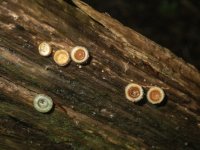
Like many fungi, this species form a network of mycelia (thread-like structures) that digests wood and organic plant material – a saprobic life style. Like other basidiomycete fungi (for example, mushroom-forming fungi), when the conditions are right (appropriate light, temperature, etc.), the mycelia produce a cup-like fruiting body (sporocarp or “mushroom”) which look like a bird’s nest (but tiny, just a few millimeters wide). Initially, the cup is covered by a thin membrane. Within the cup, haploid spores develop within several brown oval structures (peridioles) that resemble bird’s eggs. When the peridioles and their spores are ready, the protective membrane disintegrates. Open to the elements, falling raindrops propel the peridioles (and their spores) out of the “nest” – splash dispersal. The fruiting bodies are quite tough and may persist for several months after the spore sacs have been ejected.
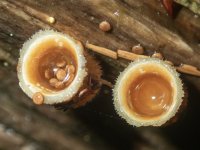
Steve

Like many fungi, this species form a network of mycelia (thread-like structures) that digests wood and organic plant material – a saprobic life style. Like other basidiomycete fungi (for example, mushroom-forming fungi), when the conditions are right (appropriate light, temperature, etc.), the mycelia produce a cup-like fruiting body (sporocarp or “mushroom”) which look like a bird’s nest (but tiny, just a few millimeters wide). Initially, the cup is covered by a thin membrane. Within the cup, haploid spores develop within several brown oval structures (peridioles) that resemble bird’s eggs. When the peridioles and their spores are ready, the protective membrane disintegrates. Open to the elements, falling raindrops propel the peridioles (and their spores) out of the “nest” – splash dispersal. The fruiting bodies are quite tough and may persist for several months after the spore sacs have been ejected.

Steve

